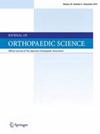Acute non-traffic traumatic spinal cord injury in the aging population: Analysis of the National Inpatient Sample 2005–2018
IF 1.5
4区 医学
Q3 ORTHOPEDICS
引用次数: 0
Abstract
Background
This study aimed to determine risk factors for poor in-hospital outcomes in a large cohort of older adult patients with acute non-traffic traumatic spinal cord injury (tSCI).
Methods
This is a population-based, retrospective, observational study. Data of older adults ≥65 years with a primary discharge diagnosis of acute non-traffic tSCI were extracted from the US National Inpatient Sample (NIS) database 2005–2018. Traffic-related tSCI admissions or patients lacking complete data on age, sex and outcomes of interest were excluded. Univariate and multivariate logistic regression analysis was used to determine associations between variables and in-hospital outcomes.
Results
Data of 49,449 older patients (representing 246,939 persons in the US) were analyzed. The mean age was 79.9 years. Multivariable analyses revealed that severe International Classification of Disease (ICD)-based injury severity score (ICISS) (adjusted odds ratio [aOR] = 3.14, 95% confidence interval [CI]: 2.77–3.57), quadriplegia (aOR = 2.79, 95%CI: 2.34–3.32), paraplegia (aOR = 2.60, 95%CI:1.89–3.58), cervical injury with vertebral fracture (aOR = 2.19, 95%CI: 1.90–2.52), and severe liver disease (aOR = 2.33, 95%CI: 1.34–4.04) were all strong independent predictors of in-hospital mortality. In addition, malnutrition (aOR = 3.19, 95% CI: 2.93–3.48) was the strongest predictors of prolonged length of stay (LOS).
Conclusions
Several critical factors for in-hospital mortality, unfavorable discharge, and prolonged LOS among US older adults with acute non-traffic tSCI were identified. In addition to the factors associated with initial severity, the presence of severe liver disease and malnutrition emerged as strong predictors of unfavorable outcomes, highlighting the need for special attention for these patient subgroups.
老龄人口中的急性非交通创伤性脊髓损伤:2005-2018年全国住院病人样本分析》。
本文章由计算机程序翻译,如有差异,请以英文原文为准。
求助全文
约1分钟内获得全文
求助全文
来源期刊

Journal of Orthopaedic Science
医学-整形外科
CiteScore
3.00
自引率
0.00%
发文量
290
审稿时长
90 days
期刊介绍:
The Journal of Orthopaedic Science is the official peer-reviewed journal of the Japanese Orthopaedic Association. The journal publishes the latest researches and topical debates in all fields of clinical and experimental orthopaedics, including musculoskeletal medicine, sports medicine, locomotive syndrome, trauma, paediatrics, oncology and biomaterials, as well as basic researches.
 求助内容:
求助内容: 应助结果提醒方式:
应助结果提醒方式:


